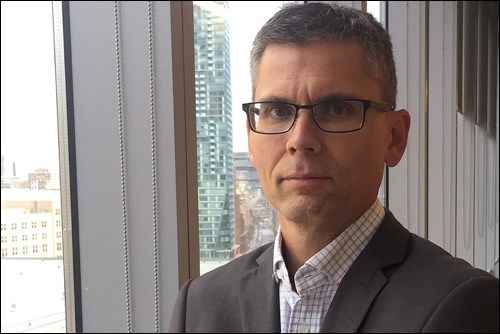Even as Hudbay plans to reduce its workforce in Flin Flon in the coming years, just 200 km away the opposite is true.
Lalor – the company’s future (if not present) flagship Manitoba mine near Snow Lake – may need as many as 100 additional employees.
“The ramping up of production will be gradual over the next couple of years, so that pace will determine staffing,” said Hudbay spokesman Scott Brubacher.
Lalor currently has 250 employees, with another 60 working at the nearby Stall concentrator. These figures exclude contractors.
While workforce levels at Lalor could eventually reach 350, that will depend on factors such as the speed and success of the ongoing ramp-up of the mine.
Technology may also play a role, especially since Hudbay has introduced a remote-controlled LHD (load, haul, dump) underground mining unit at Lalor. The unit is operated from surface.
“The technology is beneficial to the operation by contributing to health and safety, continuing ore production when shift change occurs and reducing operating cost,” said Brubacher. “The scope of its long-term role at Lalor hasn’t been finalized and people are still required – it must be operated and equipment has to be set up in the headings.”
More surface jobs will be generated as Hudbay plans to construct a $40-million plant near Snow Lake to supply paste backfill to Lalor.
The bulk of construction will take place this year ahead of an anticipated commissioning date of February 2018. Brubacher could not say how many workers the plant will employ.
Hudbay also owns an idle gold mill in Snow Lake that could potentially be refurbished to boost processing capacity for gold mined at Lalor.
The potential and expected jobs come at a crucial time for the Flin Flon-Snow Lake region. With 777 mine set to close, Hudbay plans to reduce its Flin Flon workforce by at least 500 positions by 2019 or 2020 –
with at least 200 reductions through layoff.
Hudbay admits it has been challenged to hire enough tradespeople and qualified miners for its Snow Lake operations. The planned Flin Flon reductions could give Snow Lake a ready supply of workers – and keep more area residents employed.
Many of Hudbay’s Snow Lake area workers already commute from Flin Flon. A rough estimate from 2014 put the figure at about half. Brubacher was unable to provide a more recent estimate, noting “this number is always changing.”
Earlier this month, Lalor mine manager Robert Carter told the Opasquia Times’ Marc Jackson that Hudbay’s Lalor work camp is almost full to capacity. He said he cannot foresee the 170-person camp closing any time soon.
Asked whether Hudbay’s difficulty in enticing workers to relocate to Snow Lake has hindered its operations near that community, Brubacher was succinct: “No.”
Regardless of where employees come from, Hudbay is actively working to boost tonnage at Lalor as part of a plan to regain profitability.
On the prospecting front, Hudbay is focusing its Manitoba exploration efforts on Snow Lake. This includes drilling at the Pen Zone, a deposit situated five km southwest of Lalor.
Brubacher said a decision on whether to mine the Pen Zone is months away, with assay results still to come.
“Economic analysis could potentially follow, depending on the findings,” he said.
Another question around Lalor is just how long this world-class mine, in full production since 2014, will last.
Hudbay’s current estimate has the mine running until 2031, but a new technical report expected by early April could change that projection – for better or for worse.
On the one hand, Hudbay has a history of finding mines that last much longer than initially projected.
On the other, Hudbay’s plan to increase production rates at Lalor “will reduce mine life, but keep the operation sustainable during periods of challenging metal prices,” Carter told the Times’ Jackson.




